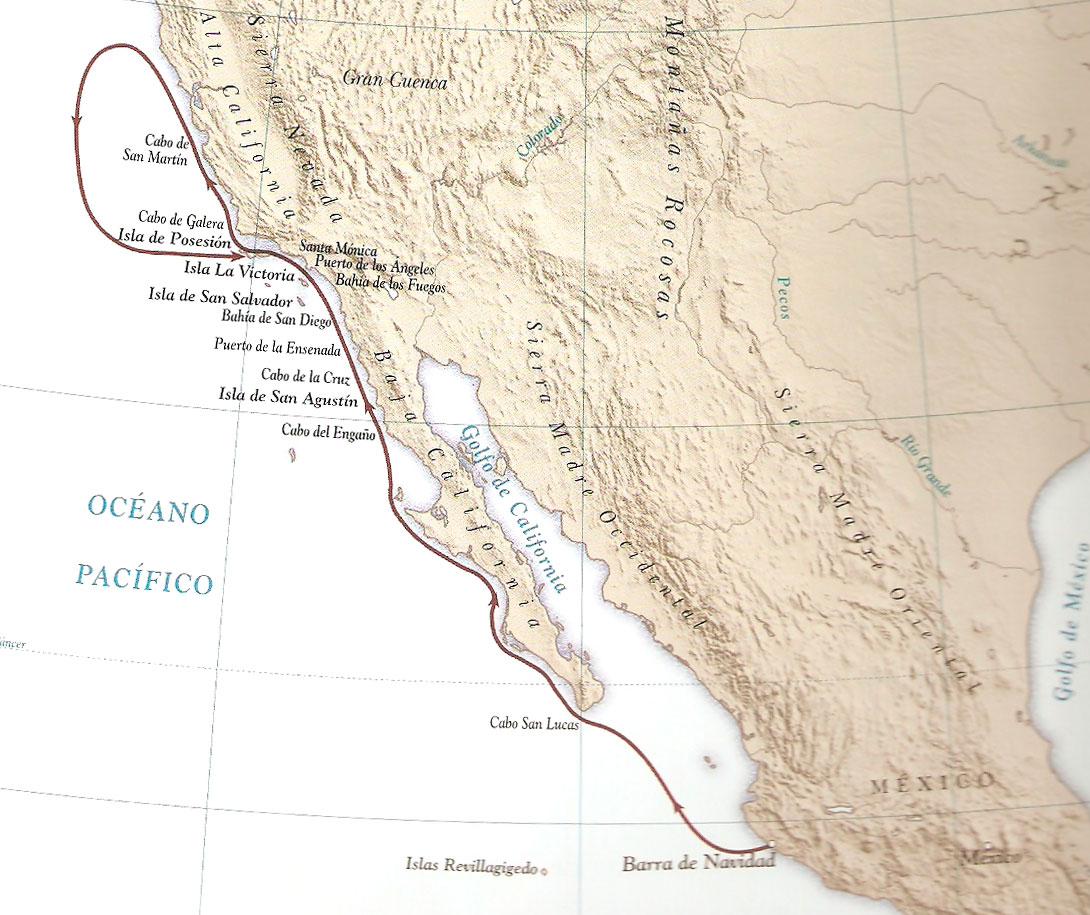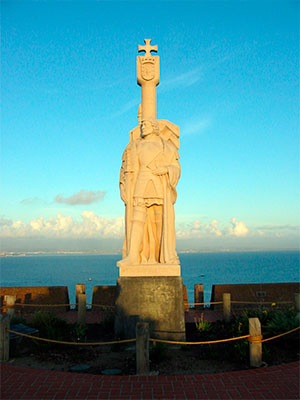Most of the Spanish expeditions of colonization and conquest of North America focused on the southern zone, with the Gulf of Mexico and Florida, and the coast this. Many men and resources were allocated to the colonization of these points mainly because of their strategic military value, from there the access to Antilles islands and fleets passing by were protected. But some years later the coast of the Pacific Ocean, called South Sea at that time, its value was rising and expeditions of exploration and population began to be sent.
Pedro de Alvarado in charge of the expedition
In 1541 the great conqueror Pedro de Alvarado, who participated in the conquest of Mexico, in the one of Central America and also tried it with the Peru and who at that time was governor of Guatemala, signed two capitulations with the Spanish crown that enabled him to make a navigation on the coast of Nueva España to the north to look for the passage to the Atlantic but this time from the other side, that is, from west to east. And another navigation to the island of the Spices, that is, Asia, and to find the route of return to Nueva España.
He organized a large expedition with 11 boats and about 800 men who set sail from Acajutla off the shores of El Salvador and headed north. Arriving at the port of Purification in Jalisco (Nueva España) they stopped to make water, collect bastiments and more soldiers. There he went to meet the Viceroy of Nueva España, don Antonio de Mendoza, and to ask him for help because of some problems that had arisen with the indigenous people in Nueva Galicia. There had been a rebellion known as Mixón War that was very hard for the Spaniards. The viceroy asked her to intervene to suffocate her. They carried out a couple of raids against the Indians but were rejected. In one of those retreats while riding on a hill a horse of a companion got angry and fell down the slope dragging Alvarado with him that was so badly wounded that he died a few days later.
Rodriguez Cabrillo new captain of the expedition to California
Despite Alvarado’s death, Viceroy Mendoza, who was part of the expedition, continued to advance with Alvarado’s plans by commissioning Captain Rodríguez Cabrillo as commander of the expedition, now somewhat reduced, assigning him two ships. The objectives remained the same: to find the mythical city of Cibola, which probably was further north, and to look for the Anian Strait, which was supposed to link the South Sea (Pacific Ocean) with the Atlantic Ocean and would allow a better navigation between Europe and Asia, the old dream of Christopher Columbus.

The expedition departed on June 27th, 1542 from the Puerto de Navidad (Jalisco). In it were sailors, soldiers, Indians, African slaves, a priest, food for two years, animals on their feet and goods. Cabrillo commanded from the ship San Salvador, the captain ship.
Discovery of California
On July 3th, just one week later, they headed for the south coast of the Baja California. Always heading north, they went along the coast and discovered the Magdalena Bay and the island of Cedros. In mid-September, after a quiet navigation, they arrived at the current Ensenada port, which they named San Mateo and at the end of the month they arrived at what we would call San Miguel Bay, which is the current San Diego Bay. This was the first time that a European entered the current territory of North American California.
Of all these points, they had a good note in their maritime charts and the geographical maps they were building. In the first week of October, they travel along the current Los Angeles and go as far as Santa Barbara and reach Punta Concepcion. In this place there were such strong winds that they had to go back to the island of San Miguel where they took refuge waiting for the storm to stop. Finally, in early November they continued their northbound route to the present Monterey Bay or Pinos Bay.

Death of Rodriguez Cabrillo
The storm returned and they decided to return to the shelter of the island of San Miguel, where they spent several months waiting for winter to pass. Juan Rodriguez Cabrillo died on January 3,1543 on this island in a skirmish with the native islanders and was buried in the isla Santa Catalina.
Bartolomé Ferrelo new captain arrives to the current Oregon
The command was taken by Bartolomé Ferrelo in February and mid-month, after the winter storms had passed, and untiring sailors continued to sail north. They arrived at the cabo Mendocino already very close to the present state of Oregon and in the month of April they decided to return to Nueva España Spain arriveng in Puerto Navidad on April 14,1543.
The expedition, from the geographical point of view, had been a success, thanks to it the knowledge of what was beyond the Baja California peninsula was widened, traveling and discovering several thousand kilometers of coast. But from the economic point of view, of profitability, it was a real failure, since the existence of Cibola and of any really interesting wealth could not be proved. And the passage from the South Sea to the Atlantic could not be found either. Progress had been made, yes, but not much.
Index of the conquest and colonization of North America
- Spanish conquest and colonization of North America.- Ponce de león and the Discovery of de Florida.
- Francisco de Garay, Expeditions along the Gulf of Mexico Coast.
- Lucas Vázquez de Ayllón, Foundation of the First Spanish Settlement in North America.
- Esteban Gómez, exploration of the entire east coast.
- Pánfilo de Narváez and Cabeza de Vaca, exploration of the Southern United States
- Nuño de Guzmán, conquistador of Nueva Galicia
- The Viceroy Mendoza and the Seven Cities of Cibola
- Hernando de Soto, the great American marathon
- Francisco Vázquez de Coronado, Arizona y Nuevo México, Texas, Kansas and Oklahoma
- Juan Rodríguez Cabrillo and the discovery of California
- Menéndez de Avilés found San Agustín of the Florida
- Juan de Oñate, the conquest of New Mexico
- The peaceful conquest
- The conquest of Texas, the Missions
- The conquest of California
- Los Caminos Reales Españoles
- The Spanish Alaska
- The Spanish Louisiana
- The loss of North America